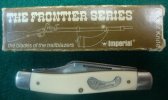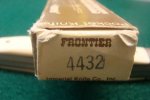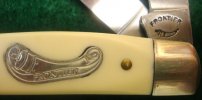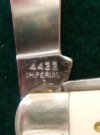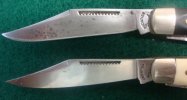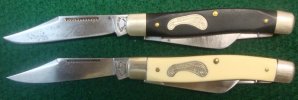- Joined
- Aug 6, 2012
- Messages
- 339
I've found two Imperial Frontier large stockman folders from the same widow via a local pawn shop. The black handled one was his EDC (which his sons didn't want) and the other was an unused "ol ivory" version of the same knife. The EDC has some great patina so I assumed that both knives had carbon blades. I offered the white one up in a trade and the other party wanted to know if it was stainless. I put a magnet to both Frontiers, a known 1095 (GEC), and a stainless Buck folder and they were all magnetic. Neither Frontier has any particular markings on the blade so how can you tell?
